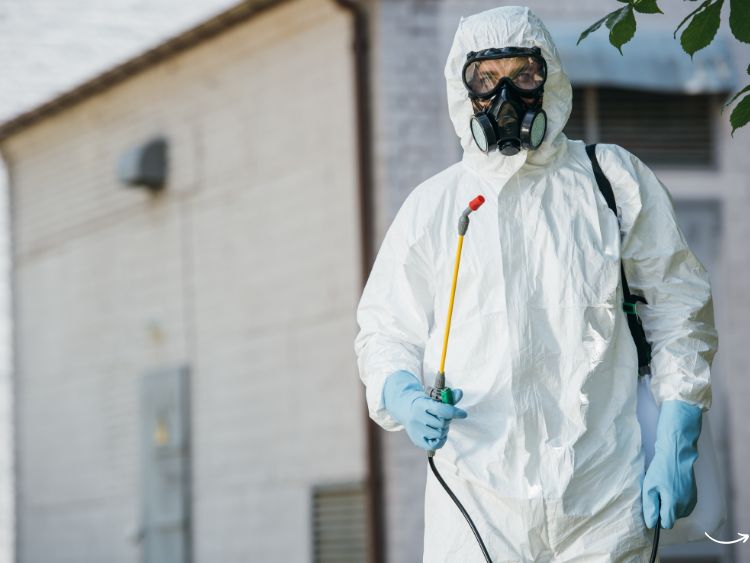Got pests? It’s a nightmare for any lawn enthusiast to see their pristine yard invaded by unwelcome guests. Lawn pest control isn’t just about keeping your grass green—it’s about maintaining a healthy environment for your family and pets. Whether you’re dealing with ants, grubs, or moles, the right pest control strategy can save your lawn and your sanity. In this comprehensive guide, we’ll delve into effective methods, natural solutions, and expert tips for lawn pest control. So, let’s get started and kick those pests to the curb!
Understanding Common Lawn Pests
Before you can tackle lawn pest control, you need to know what you’re up against. Here’s a rundown of some common lawn pests and the havoc they can wreak:
1. Grubs
Grubs are the larvae of beetles and are infamous for feeding on grass roots, causing brown patches in your lawn. They’re most active in late summer and early fall.
2. Ants
Ants might seem harmless, but their nests can damage grass roots and create unsightly mounds.
3. Moles
Moles dig tunnels that can ruin the smooth surface of your lawn and disturb plant roots.
4. Chinch Bugs
Chinch bugs suck the sap out of grass blades, causing them to turn yellow and die.
5. Armyworms
These caterpillars can strip the foliage off your grass in no time, leaving it looking like a battlefield.
Signs You Have a Pest Problem
Detecting pests early can prevent significant damage. Look out for these signs:
- Brown or dead patches: These could indicate grubs or chinch bugs.
- Raised tunnels or mounds: A sign of mole activity.
- Thin or missing grass: Armyworms may be to blame.
- Visible pests: Spotting pests on the grass or soil surface is a clear indicator.
Effective Lawn Pest Control Strategies
So, how do you wage war on these pesky invaders? Here are some tried-and-true lawn pest control methods:
1. Natural Predators
Introduce beneficial insects like nematodes or ladybugs that prey on lawn pests. This method is eco-friendly and effective.
2. Biological Controls
Use bacteria like Bacillus thuringiensis (Bt) to target specific pests without harming other wildlife.
3. Chemical Treatments
Sometimes, natural methods aren’t enough. In such cases, targeted insecticides can be effective. Always follow label instructions to avoid harming beneficial insects and plants.
4. Regular Mowing and Watering
Maintain your lawn with regular mowing and proper watering. A healthy lawn is more resistant to pests.
5. Aeration
Aerating your lawn improves soil health and discourages pests like grubs and ants from setting up shop.
DIY Natural Lawn Pest Control Remedies
Prefer a chemical-free approach? Here are some natural remedies you can whip up at home:
1. Soap and Water Spray
A simple mixture of dish soap and water can deter pests like ants and chinch bugs. Spray it directly on affected areas.
2. Neem Oil
Neem oil is a natural pesticide that works against a variety of lawn pests. Mix it with water and spray on your lawn.
3. Garlic Spray
Garlic has natural insect-repelling properties. Blend garlic with water and spray it on your lawn to keep pests at bay.
4. Diatomaceous Earth
This natural powder can be sprinkled on your lawn to kill pests like ants and grubs without harming your grass.
Preventive Measures to Keep Your Lawn Pest-Free
Prevention is better than cure. Here are some tips to keep pests from invading your lawn:
1. Regular Lawn Maintenance
Keep your lawn mowed, watered, and fertilized to maintain its health and resilience against pests.
2. Proper Drainage
Ensure your lawn has good drainage. Waterlogged lawns attract pests like mosquitoes and grubs.
3. Debris Removal
Remove leaves, branches, and other debris where pests can hide and breed.
4. Overseeding
Overseeding with pest-resistant grass varieties can help crowd out weeds and deter pests.
FAQs About Lawn Pest Control
Q: How often should I treat my lawn for pests?
A: It depends on the pest and treatment method. Some treatments are applied seasonally, while others may need more frequent applications. Always follow product instructions.
Q: Are natural pest control methods effective?
A: Yes, natural methods can be very effective, especially when combined with good lawn maintenance practices.
Q: Can lawn pests affect my pets?
A: Some pests can harm pets. For example, fleas and ticks can be transmitted from your lawn to your pets. Keeping your lawn pest-free can help protect them.
Q: How do I know if my lawn treatment is working?
A: Monitor your lawn for signs of pest activity. If you see a decrease in damage and pest sightings, your treatment is likely working.
Q: Is it safe to use chemical treatments around children and pets?
A: Many chemical treatments are safe if used according to the label instructions. However, it’s always best to keep children and pets off treated areas until they are dry.
Summary
Maintaining a pest-free lawn is no easy feat, but with the right strategies, it’s entirely doable. From understanding common pests to implementing effective control methods and preventive measures, you can keep your lawn looking lush and green. Whether you opt for natural remedies or chemical treatments, regular maintenance is key. Remember, a healthy lawn is your best defense against pests. So, roll up your sleeves and take charge of your lawn pest control today!
Authoritative Links
- Environmental Protection Agency (EPA) – www.epa.gov
- National Pesticide Information Center (NPIC) – www.npic.orst.edu
- University of California Integrated Pest Management Program – www.ipm.ucanr.edu
- Lawn Care Academy – www.lawn-care-academy.com
- The Lawn Institute – www.thelawninstitute.org
By following these guidelines and tips, you’ll be well on your way to a beautiful, pest-free lawn that you can enjoy year-round.

